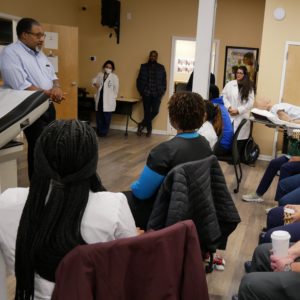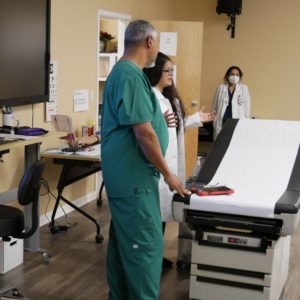AUIS doctor suggests successful treatments for keloids
People in the United States looking for treatments for keloid scars can implement more than just the traditional surgical procedures, according to one doctor.
Dr. Oleksii Hliebov, professor of Physiology and Pharmacology at the American University of Integrative Sciences, School of Medicine offers medical suggestions for correcting keloids.
Keloids are the excessive growth of scar tissues that can affect any part of the body but are most commonly found on the chest, shoulders, earlobes and cheeks. While many doctors agree that keloids are not health risks, they may cause discomfort and often create cosmetic concerns. And, while scientist have not agreed to the specific causes of keloid scars, many methods have been suggested for its treatment over the years.
The most successful treatments used to remedy keloids scars can be divided into one of four corrective methods, according to Dr. Hliebov. These treatments are medical therapy, physiotherapy, surgical removal or cosmetic corrections.
Physicians use corticosteroid hormones to treat keloids through medically therapy, said Hliebov. Corticosteroid hormones, a special class of human hormones that are produced by adrenal medulla, are introduced into the scar tissue itself.
This method of treatment affects the formation of collagen. Typically, this method of treatment is not primarily used by physicians because of the side effects associated with it. The most commonly known side effects include skin thinning, stretch lines, enlarged blood vessels, dermatitis, tearing of the skin and local increased hair thickness.
A more popular treatment involves the use of silicon wafers, according to Hliebov.
“The therapeutic effect of this method is based on pressure and tissue hydration, which leads to a reduction in the size of the keloid,” said Hliebov. “In order to achieve results the plate must be worn for months and sometimes even years.”
Statistically this method of treatment does not exceed 35 to 45 percent of effectiveness, he said. A more effective method is through the use of laser therapy.
“Through carbon dioxide and argon laser, physicians are able to make the keloid scar less noticeable and reduce its size,” said Hliebov.
Other methods under the classification of Physiotherapy include the imposing of liquid nitrogen radiation therapy.
The third method in treating keloid scars is through surgery, Dr. Hliebov said.
“Surgical treatments are used only in extreme cases and these methods must be combined with other techniques such as radiotherapy, corticosteroids or interferon (medication responsible for immune response),” according to Dr. Hliebov.
The fourth suggested method in dealing with keloid scars involves cosmetic procedures.
“Cosmetic procedures are directed only to the external correction of defects,” said Hliebov. “A person with keloid scars needs to know that cosmetic correction using dermabrasion, peels with fruit acids or mesotherapy is safe only when the scars no longer grow — typically two or more years from their appearance.”
Dermabrasion is a procedure which uses a special brush to remove the upper layer of the skin, while Mesotherapy comprises the injection of exact amounts of natural extracts or drugs into the skin.
It is important to note that keloid scar treatments requires a strictly individual approach, Dr. Hliebov said.
“As a rule, keloids are not harmful to your health,” Hliebov said “They only create cosmetic concerns. But if you noticed that your scar is growing or any additional symptoms appeared – immediately contact your doctor. Uncontrolled growth of keloid scar can be a sign of skin cancer.”
Treatment of keloid scars is not an easy thing and it is not always effective. Remember, that keloids are going to have genetic component. Parents who have them should know there is a great chance it could appear on their children. Doctors with patients who are susceptible to keloids should remind them to avoid skin injuries such as tattoos, piercings and unnecessary surgeries.



